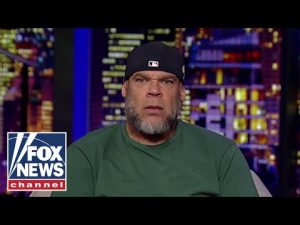In what seems to be yet another episode of urban chaos playing out in a major city, Chicago finds itself under the national spotlight as crime continues to spiral out of control. The latest incident involves Bethany McGee, tragically identified as the victim of a horrific attack where she was set on fire by a criminal with a disturbing history. What exacerbates the situation is the infuriating fact that the suspect had been arrested a mind-boggling 72 times prior. This leaves one wondering why someone with such an extensive rap sheet was walking the streets and not behind bars.
The spotlight on crime is not merely a local concern; it has become a glaring issue reflecting the city’s broader challenges. Transportation Secretary Sean Duffy minced no words, criticizing Chicago’s lenient crime policies. Duffy’s argument is clear—had the repeat offender been incarcerated as he should have been, such a gruesome act might have been prevented. It’s a damning indictment of policies that seem more focused on giving chances to criminals than on protecting law-abiding citizens.
Furthermore, the chaos does not end with this single heinous act. The city witnessed another tragic weekend, with one teenager losing his life and eight others being injured in a shooting spree. The once-iconic Christmas tree lighting ceremony—intended as a symbol of joy and community—has now become synonymous with violence. It is both heart-wrenching and infuriating to see such traditionally peaceful events being marred by criminal activity.
On a broader scale, this situation has national implications. Former President Donald Trump has offered federal intervention, echoing sentiments among various Chicago residents who voice their fears and frustrations. Surprisingly, there is growing support across diverse communities within the city, including Black and Brown residents, who reportedly share a united cry for a more aggressive stance on crime. Many feel that the city’s current administration, led by Mayor Brandon Johnson, is failing them with policies perceived as weak and ineffective.
With kids being involved in violent incidents, the question arises about what kind of future is being sculpted for the younger generation. The viral videos of attacks going unchecked reflect a worrying trend—one that sees youths embroiled in a cycle of violence rather than in school or communities promoting positivity. How long can this situation persist before decisive action is taken? As of now, the need for a drastic policy shift seems inevitable if Chicago is to reclaim its streets and restore public trust and safety.







